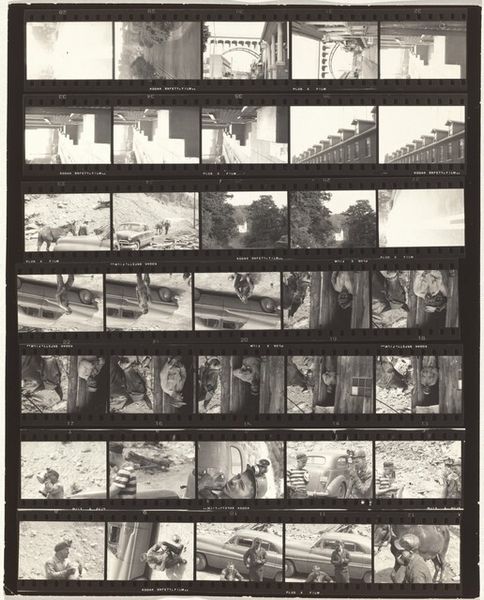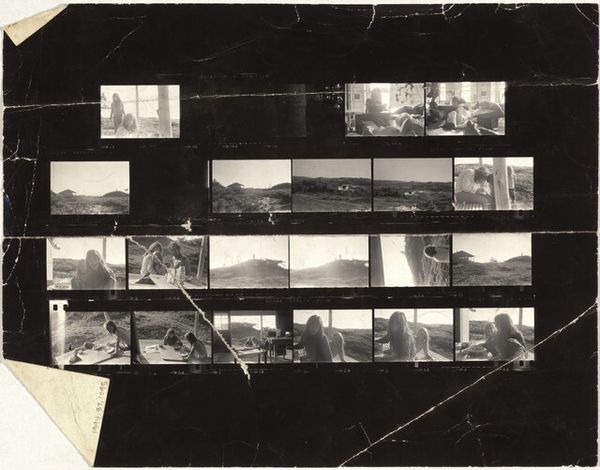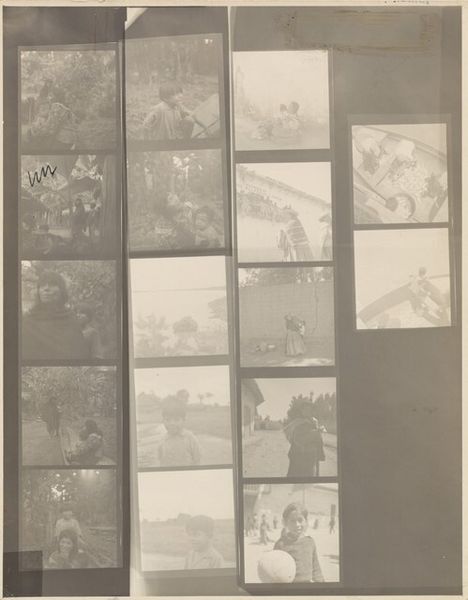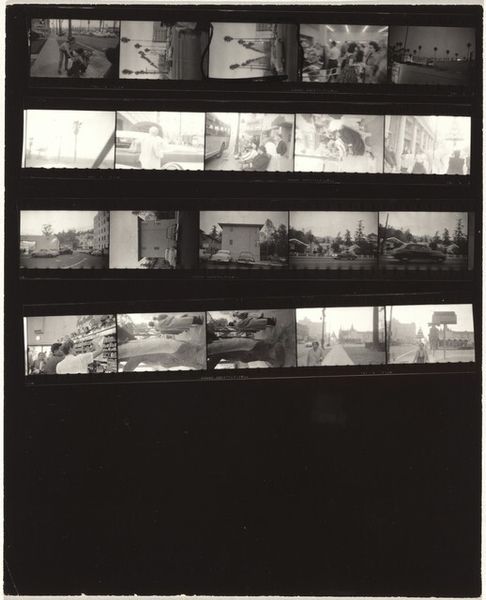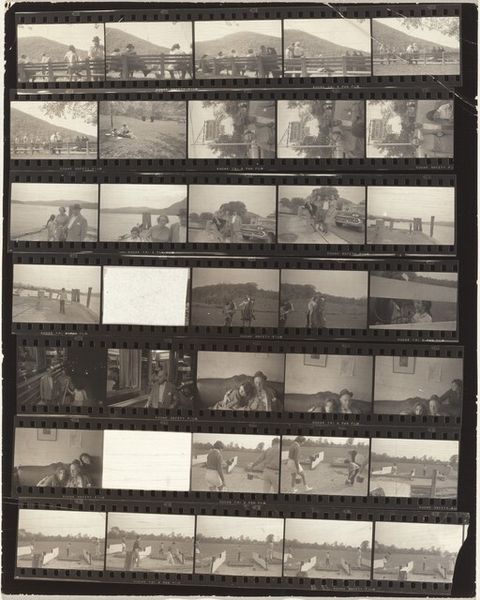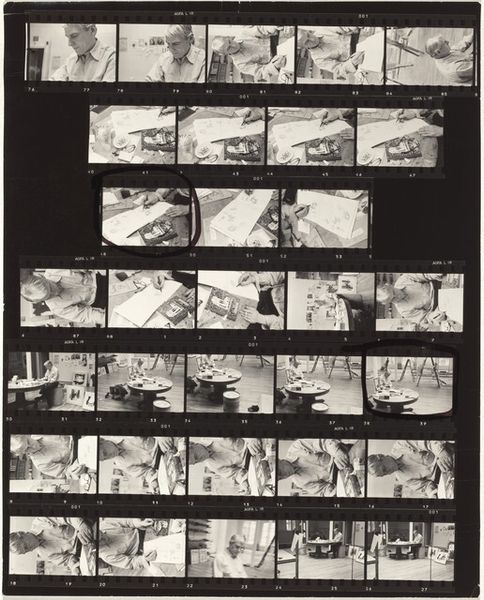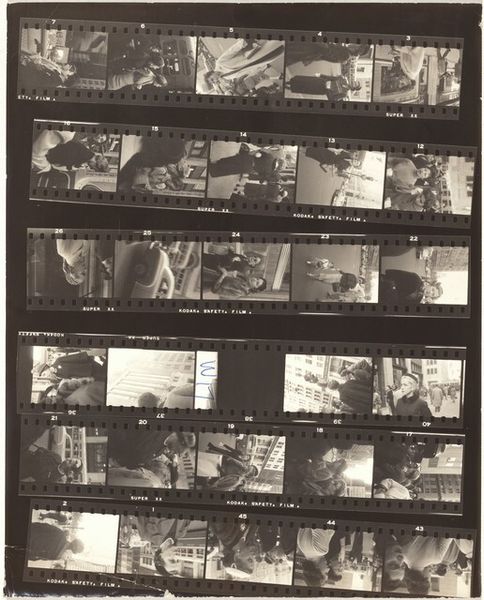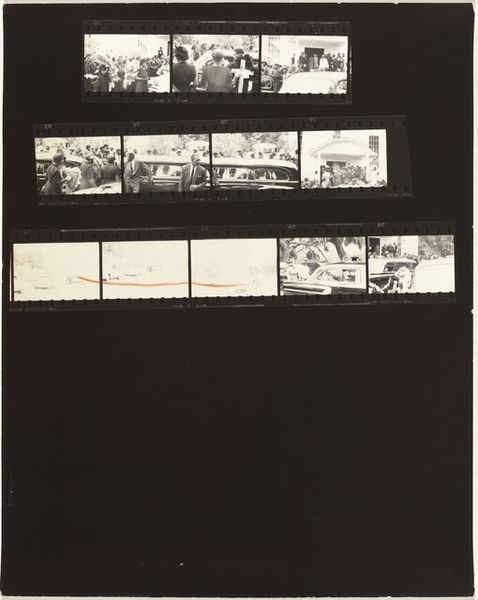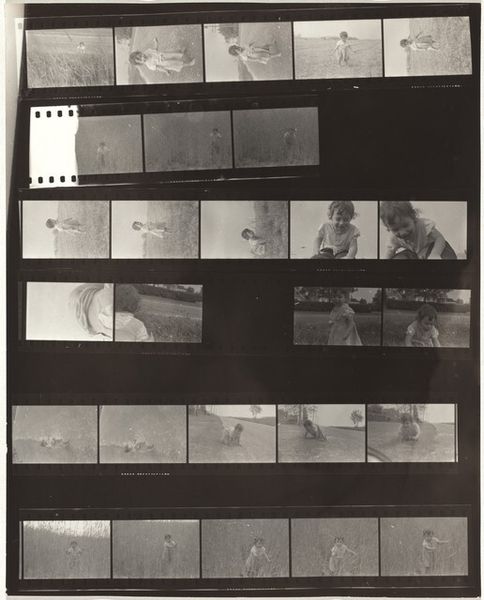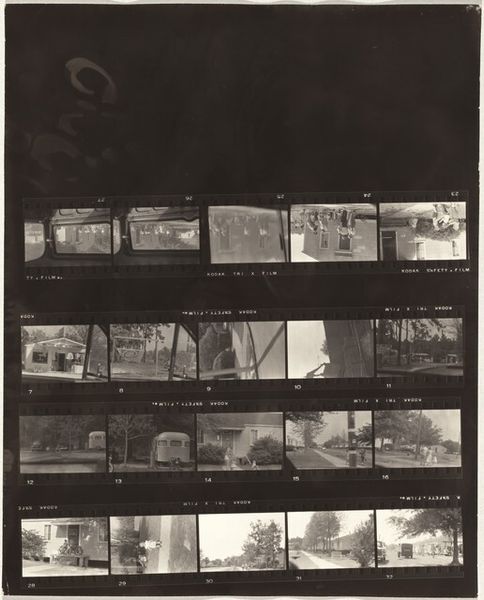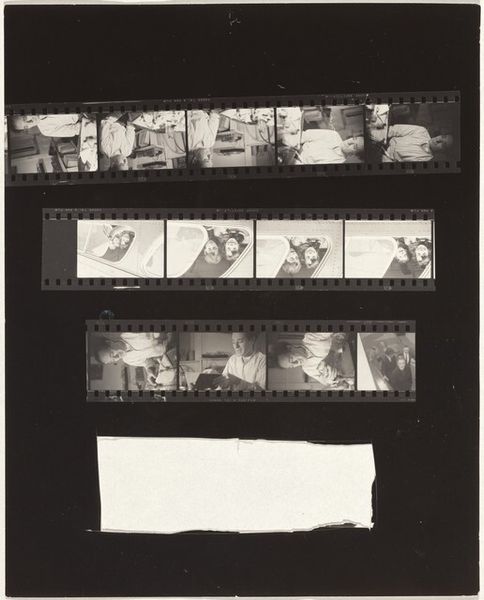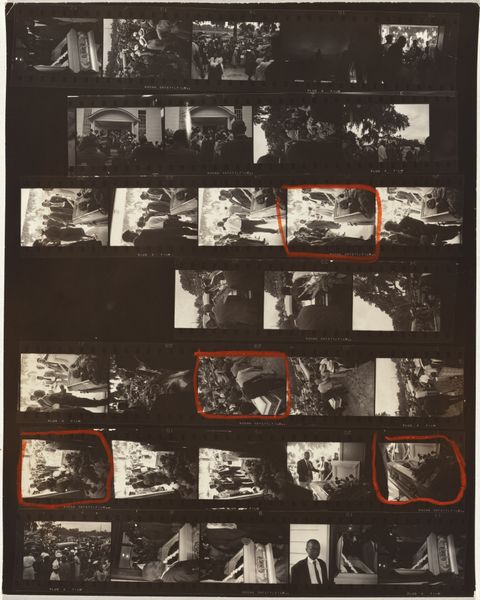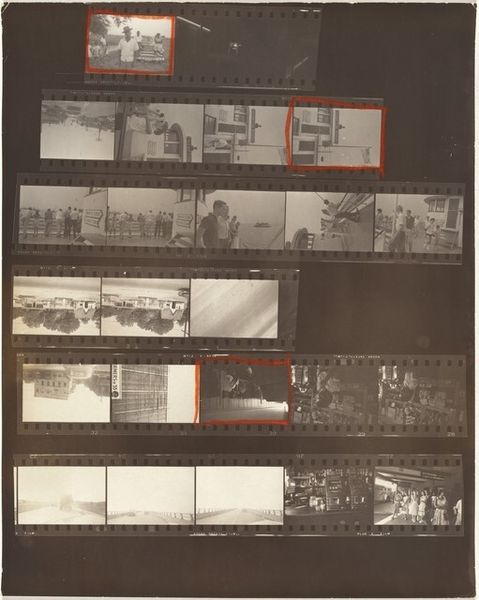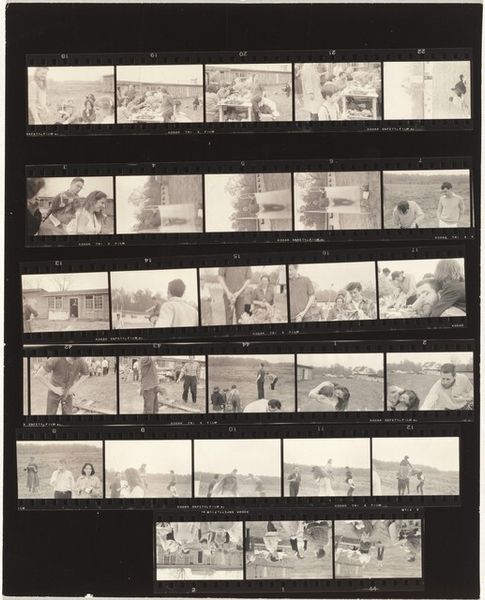
photography, gelatin-silver-print
#
social-realism
#
photography
#
gelatin-silver-print
#
genre-painting
#
realism
#
monochrome
Dimensions: sheet: 29.6 x 21 cm (11 5/8 x 8 1/4 in.)
Copyright: National Gallery of Art: CC0 1.0
Curator: We're looking at Robert Frank’s photographic work, “Die Arbeiter (Workers) 1-8,” made between 1942 and 1946, printed as a gelatin-silver print. Editor: It's immediately striking. Stark, almost oppressive in its grey tones. The grid-like presentation feels regimented, mirroring, perhaps, the laborers' lives depicted. Curator: Indeed. The visual echoes create a potent sense of unity, suggesting the connected experiences of workers. What cultural memory does this provoke for you? Editor: The image evokes a feeling of industrial fatigue, the weariness ingrained in physical labor, echoing photographs from the Depression era, yet distinct. Look at how the artist focuses on the materiality of the road construction--the texture of tar and rough asphalt. Curator: That raw physicality extends beyond the materials. It's visible in the stooped postures, the tools in their hands, evoking the dignity, and also, the exploitation tied to working-class identity, particularly in the postwar period. The fumes in frame 8 are particularly poignant as a sign of progress. Editor: The progression through the frames, too, from initial labour to the smoking culmination is clearly presented, each telling of how men were shaping, marking, almost signing their names on this environment. Do the numerical sequencing also reflect this idea of their contributions? Curator: Precisely. Numbers not just count labor, but individual experiences too; their sweat mingled with tar became lasting infrastructure that bound the country together and the idea of their signatures and labor will be echoed over the next era through highways and infrastructure Editor: Seeing these workers like this—anonymous yet unified, highlights their collective strength but also the facelessness industrial work often imposed. Curator: Exactly. This piece compels us to re-evaluate what symbols we associate with "progress," who has been left out, and the meaning behind seemingly simple, black-and-white documentary. Editor: Agreed. Robert Frank makes us see and re-think with one glimpse.
Comments
No comments
Be the first to comment and join the conversation on the ultimate creative platform.
